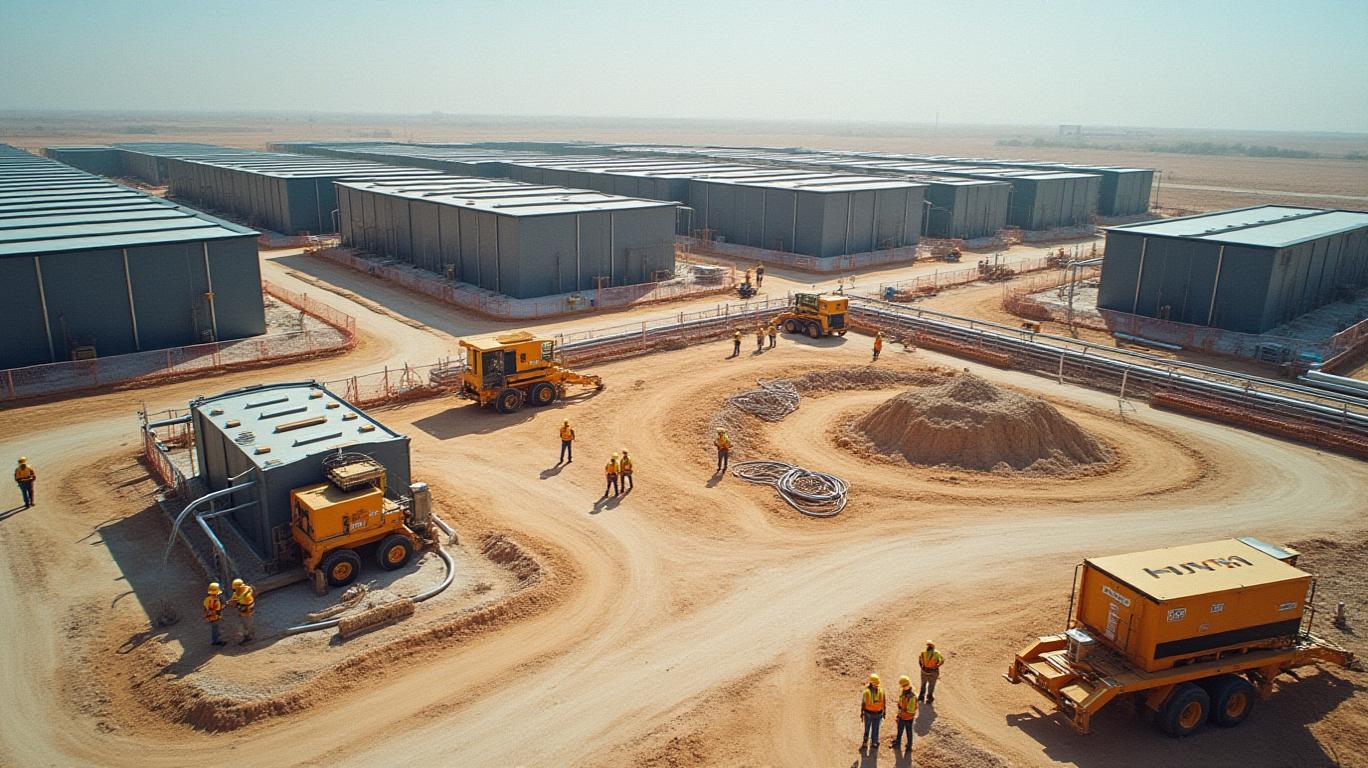Hut 8 Corp (HUT): Navigating Turbulent Waters in the Transition to Energy Infrastructure
Hut 8 Corp (HUT), a Canadian-based digital infrastructure and energy platform, has entered a pivotal phase of its evolution. The company’s Q1 2025 earnings report highlights a stark trade-off between short-term financial pain and long-term strategic ambition. With revenue plummeting 57.8% year-over-year to $21.8 million and a net loss of $134.3 million,
is clearly prioritizing reinvestment over profitability. Yet, beneath the headline figures lies a complex narrative of strategic pivots, operational progress, and risk-laden bets on energy infrastructure.The Financial Reality: A Costly Transition
The numbers are unambiguous: Hut 8’s Q1 results reflect the high cost of its shift from a Bitcoin-mining-centric model to an energy-first platform. Revenue from its core Compute segment (Bitcoin mining, GPU-as-a-Service, and cloud operations) dropped to $16.1 million, down 50% year-over-year, while its Power segment struggled to $4.4 million. The most alarming figure is the cost to mine a Bitcoin, which surged to $58,757—more than double the $24,594 recorded in Q1 2024. This spike stems from rising energy costs (+29.1% year-over-year to $51.71/MWh) and reduced Bitcoin production (167 coins mined vs. 716 in 2024).
The market’s reaction to these results was mixed. While shares dipped briefly, they rebounded 4.6% to $13.24 on May 8, 2025, suggesting investor optimism about Hut 8’s long-term vision. Yet, with a trailing 12-month revenue of just $153 million and a market cap of $1.325 billion, the company’s valuation hinges on execution of its ambitious plans.
The Strategic Pivot: Power First, Bitcoin Second
Hut 8’s CEO Asher Genoot framed Q1 as a “deliberate and necessary investment phase,” emphasizing the company’s “power-first” development model. This strategy involves acquiring and optimizing energy assets to build a diversified revenue stream. Key pillars of this pivot include:
- American Bitcoin: A 80%-owned subsidiary launched in early 2025, which consolidates Hut 8’s Bitcoin mining operations while attracting institutional investors like Eric Trump and Donald Trump Jr. This move aims to:
- Reduce capital costs via partnerships.
- Isolate Bitcoin mining risks from core infrastructure projects.
Scale high-performance computing and data center opportunities.
Energy Infrastructure Pipeline: Hut 8 now manages 1,020 MW of energy capacity and has 11.8 GW of projects in development (2.6 GW under exclusivity). Notable projects include:
- The 205 MW Vega data center in Texas, 70% complete and slated for Q2 energization.
The River Bend campus in Louisiana, a 592-acre site targeting utility-scale power generation.
Technology-Driven Efficiency:
- ASIC fleet upgrades improved energy efficiency by 37% to 20 J/TH.
- Proprietary tools like Reactor (curtailment control) and Operator (ASIC automation) aim to reduce operational costs further.

The Risks: Execution and External Forces
The success of Hut 8’s pivot depends on overcoming significant hurdles:
- Energy Cost Volatility: While the company’s power-first model seeks to lock in favorable energy terms, rising electricity prices (up 29% year-over-year) threaten margins.
- Bitcoin Mining Profitability: Even with efficiency gains, Hut 8’s cost-to-mine per Bitcoin ($58,757) exceeds the average Bitcoin price in Q1 2025 ($79,000). Sustained price declines could exacerbate losses.
- Project Delays: The Vega data center’s energization timeline (Q2 2025) and River Bend’s sitework progress are critical to generating near-term cash flow. Delays could strain liquidity.
- Regulatory Uncertainty: Bitcoin mining’s legal status varies globally, and Hut 8’s U.S. focus leaves it exposed to federal policies on crypto and energy.
Valuation and Investment Thesis
Hut 8’s valuation is a bet on its ability to monetize energy assets beyond Bitcoin mining. Key metrics to watch:
- Power Segment Revenue Growth: If the $125 million annualized revenue from its Bitmain partnership materializes, it could offset Bitcoin volatility.
- Strategic Reserve Appreciation: The company’s Bitcoin holdings (10,264 BTC, valued at $847 million) act as a double-edged sword—gains here boost equity, but losses amplify pain.
- Capital Efficiency: The $275.5 million raised via an ATM program in early 2025 provides a buffer, but Hut 8 must avoid further equity dilution.
Conclusion: A High-Risk, High-Reward Gamble
Hut 8’s Q1 2025 results underscore a company in transition—not failing, but failing forward. While the financials are grim, the strategic moves are audacious and potentially transformative. The power-first model, if executed, could position Hut 8 as a leader in energy-driven digital infrastructure. However, the stakes are high:
- Upside Case: Successful energization of Vega and River Bend, combined with Bitcoin price stability above $50,000, could yield a $2 billion+ market cap by year-end.
- Downside Risk: Missed project timelines, energy cost inflation, or Bitcoin price drops below $40,000 could trigger a liquidity crisis.
Investors must weigh the 11.8 GW pipeline and 37% efficiency gains against the $134 million loss and 57.8% revenue drop. For risk-tolerant investors, Hut 8’s pivot represents a compelling opportunity to bet on energy infrastructure’s role in the digital economy. For others, it’s a high-wire act with no safety net.
In the end, Hut 8’s story is less about Bitcoin and more about building the energy backbone of Web3. The question isn’t whether it can mine Bitcoin profitably—it’s whether it can mine value from its energy assets. The jury is still out, but the first quarter of 2025 was a bold opening act.

Comments
No comments yet